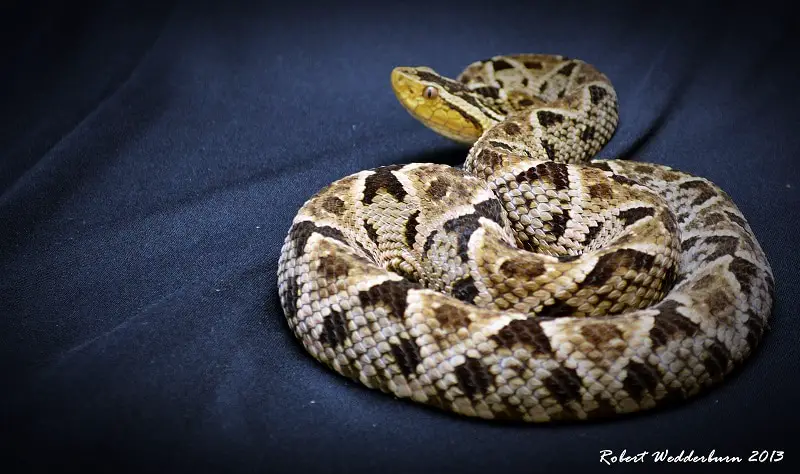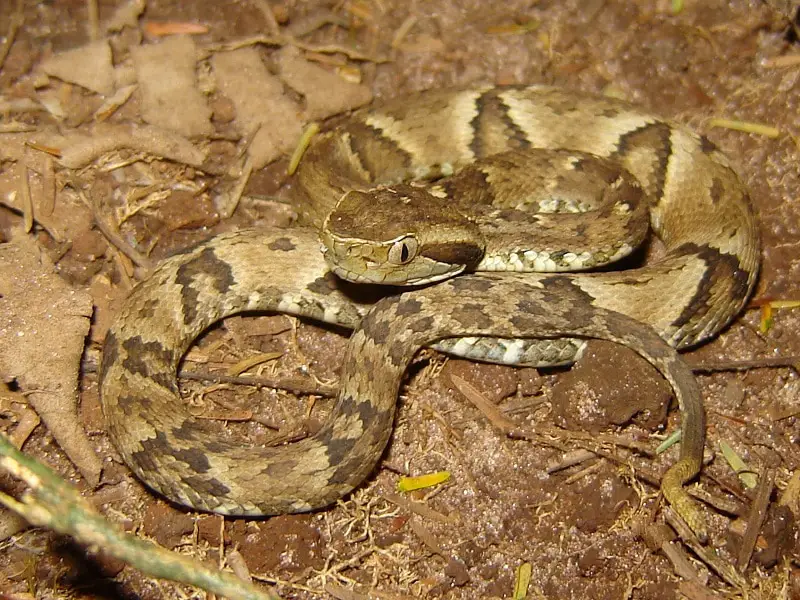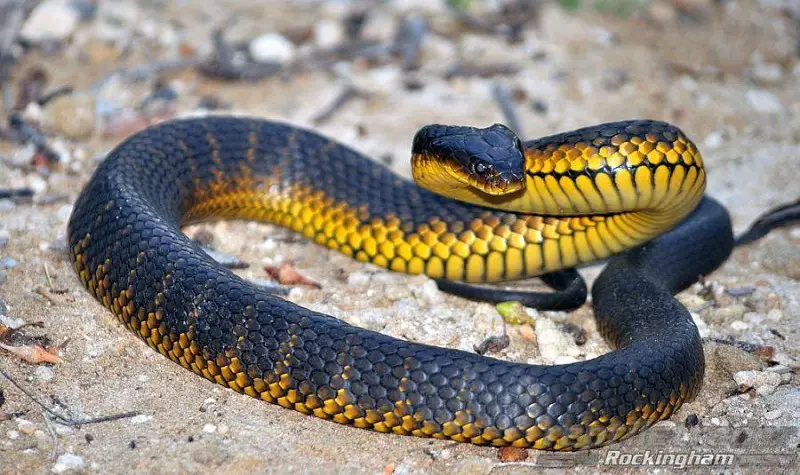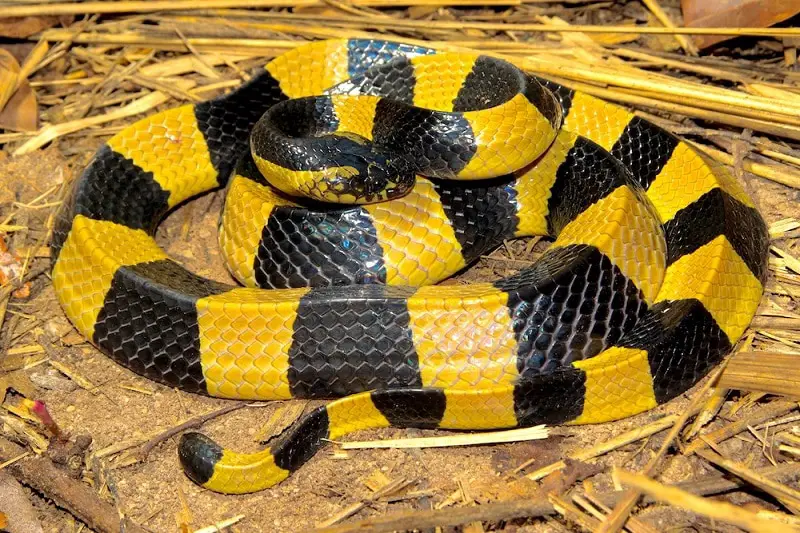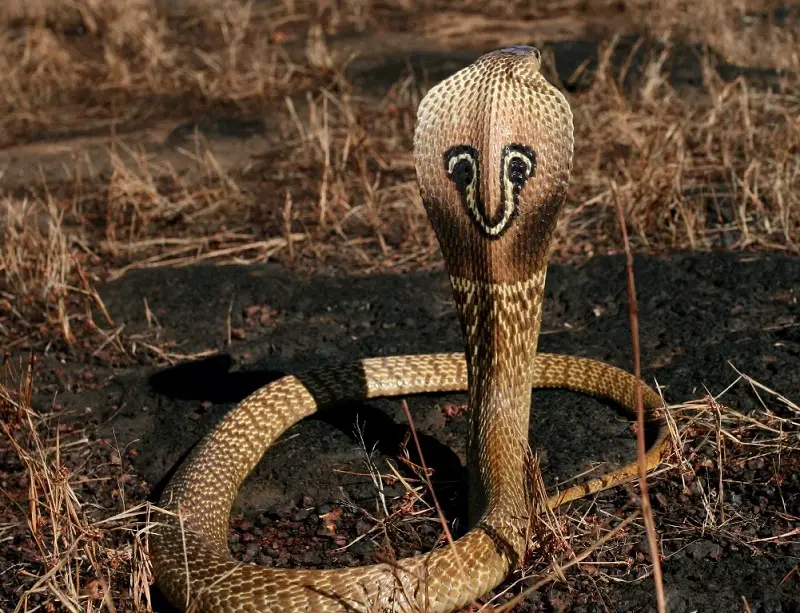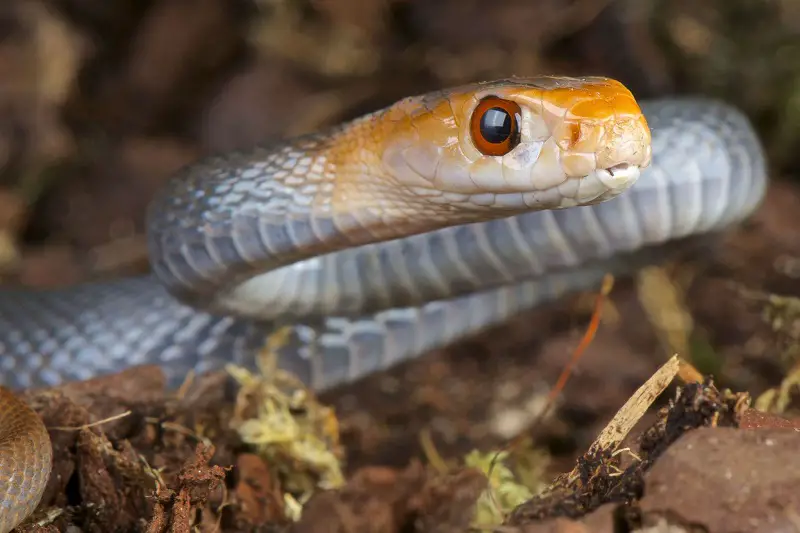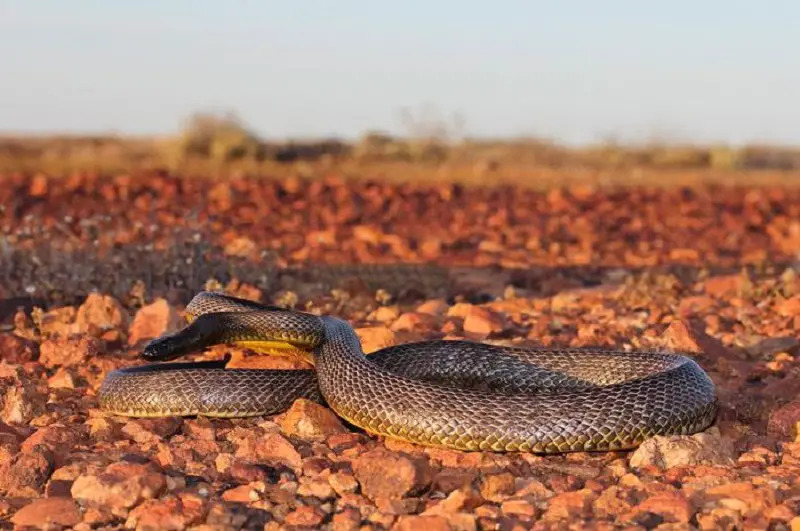Black Mamba
Source: Link
Being fond of termite mounds, this snake is usually found on the ground. Named for its black mouth, this snake is feared for its large size and quickness. That and it carries venom that is fatal for humans. Although it’s known for its aggressive nature, there’s little proof of unprovoked attacks on humans. Plus, it’s responsible for only a few deaths each year. It is a snake whose skin color is dark green or gray on the back and a whitish color on the back. It is called black mamba because the color of the inside of its mouth is bluish black. It is one of the longest snakes in all of Africa, being the average length of an adult specimen about 2.5 meters and can reach up to 4.5 meters. Click the next ARROW to see the next image!
Barba Amarilla
Source: Link
The venom of some of the species is quite dangerous particularly that of the Okinawa habu, an aggressive snake that enters homes in Ryukyu Islands. In Central America, the venom of the terciopelo is painful and can be deadly as well. Its bite is fearsome because it affects in a double way: locally and immediately it produces great necrosis, edema, local bleeding and very intense pain. Subsequently, at the systemic level, its toxins alter coagulation, leading to generalized bleeding that can lead to death if the serum is not applied within four hours of the injury. Click the next ARROW to see the next image!
Jararaca
Source: Link
The best-known venomous snake in wealthy and heavily populated areas of southeastern Brazil, it accounts for 52% of snakebites between 1902 and 1945. Of those bitten, 0.7% resulted in death. This snake’s venom is a bit more toxic than the terciopelo’s. From the venom of the jararaca snake, a group of drugs was developed in the 1970s, the ACE inhibitors, now in common use against hypertension. Researchers wondered why day laborers on Brazilian banana plantations who suffered from the jararaca bite fainted due to a sudden drop in blood pressure. They then isolated the hypotensive agent from the venom. But they had to convince drug companies that the liquid that came from the serpent’s fangs would save lives. And it is not enough to fill a poison capsule and give it to the patient; The useful component of the toxin had to be subjected to molecular modifications: it was resized and altered to survive the severe effects of the human digestive system. A synthetic version finally reached the human trial phase, and in 1975 the first drug for hypertension, captopril, was approved for use. The category of ACE inhibitors launched by captopril today treats tens of millions of hypertensive patients around the world, with multimillion dollar sales. Click the next ARROW to see the next image!
Boomslang
Source: Link
Known as one of the most dangerous snakes in Africa, this reptile can hunt by simply extending part of its body from a tree thereby looking like a branch. This snake has rear fang and delivers venom by chewing on its prey until it succumbs. The venom of the boomslang is very powerful, it is made up mainly of a hemotoxin that disables the blood clotting process and its victims dream of dying as a result of bleeding. Other symptoms include: headache, drowsiness, nausea, and hallucinations. Since the venom takes a long time to act, symptoms do not usually appear until hours after the bite. This may cause the victim to underestimate the seriousness of the bite, although on the other hand it allows sufficient time for the necessary medical attention to be sought. Just 5 milligrams of the poison from a boomslang is enough to kill an adult. Click the next ARROW to see the next image!
Tiger snake
Source: Link
This snake inhabits the southern fringe of Australia as well as nearby islands. When this snake prepares to strike, it resembles the attacking form seen in Asian and African cobras where it flattens its head and neck. Originally from Western Australia, the tiger snake can also occupy a large part of the territory of South Australia, Tasmania and New South Wales, its preferred spaces being those areas near the coasts. Their large size and toxic venom make them extremely dangerous to humans. Although they generally prefer to escape conflict, when cornered they execute an impressive display of threat. What they do is erect their body in a tight curve, with their head slightly raised and aim directly at the subject causing this reaction. They may whistle loudly while inflating and deflating their body, and if provoked further, they attack and bite forcefully. Click the next ARROW to see the next image!
Saw-scaled viper
Source: Link
It is considered one of the deadliest snakes because it has killed more humans than any other snakes combined. Although the snake’s venom is lethal in only less than 10% of its victims, the creature’s aggressiveness does mean reports will always surface each year of it biting people. Their large eyes have deep black vertical pupils and yellowish or golden irises, dotted with small black dots. They are usually crossed by a dark band that continues along the side of the head, gradually widening until it reaches the neck area. On the nape of the neck, 2 oblique bands, also dark, trace an inverted v with the opening towards the neck. Click the next ARROW to see the next image!
Banded krait
Source: Link
A relative of the cobra, this snake is quite venomous. The venom of the banded krait is a neurotoxin capable of inducing paralysis. The venom of the striped krait contains mainly pre- and postsynaptic neurotoxins with LD50 values of 2.4 mg / kg to 3.6 mg / kg subcutaneously, 1.289 mg / kg intravenously V and 1.55 mg / kg intraperitoneally. The average amount of venom in a bite is 20 to 114 mg. The main clinical effects caused by the venom of this species include: vomiting, abdominal pain, diarrhea, dizziness, etc. Severe poisoning can lead to respiratory failure and death can occur from suffocation. Click the next ARROW to see the next image!
King cobra
Source: Link
This is the longest venomous snake in the world and that description alone can strike fear into the hearts of many. The bite of a king cobra delivers a great amount of neurotoxins that induce paralysis. Here’s how strong the venom of this snake is: it can kill an elephant in just a few hours. In the case of humans, 50 to 60% of untreated cases result in death. The venom of a cobra contains neurotoxins, which can cause respiratory failure and death in humans. However, it should be noted that cobras do not attack humans without provocation. Click the next ARROW to see the next image!
Coastal taipan
Source: Link
Another cobra relative, this one creates venom similar to the king cobra. However, the bite of this snake is proven to be lethal in over 80% of untreated cases. The Coastal Tapian has a diet broadly similar to that of the Inland Taipan. This snake also feeds on small mammals and rodents. The Coastal Tapian can feed on lizards if desperate, but this is rare. Food tends to be plentiful for this breed of snake, as they live in more densely populated areas. Click the next ARROW to see the next image!
Western taipan
Source: Link
Unlike the snake that came before, this one resides inland. It’s also called the “fierce snake” given its ability to deliver a potent concoction of toxins. The venom of this inland taipan contains taipoxin, a mix of neurotoxins, procoagulants and myotoxins that paralyze, hamper breathing, cause blood vessels and tissues to hemorrhage and it also damages muscles. The good news is that despite their lethal nature, these snakes are not aggressive. Like most reptiles, they are more afraid of humans than we are of them. The Inland Taipan Snake is largely solitary and avoids any human contact whenever possible. They will not attack you at first sight, preferring to escape to avoid trouble.


